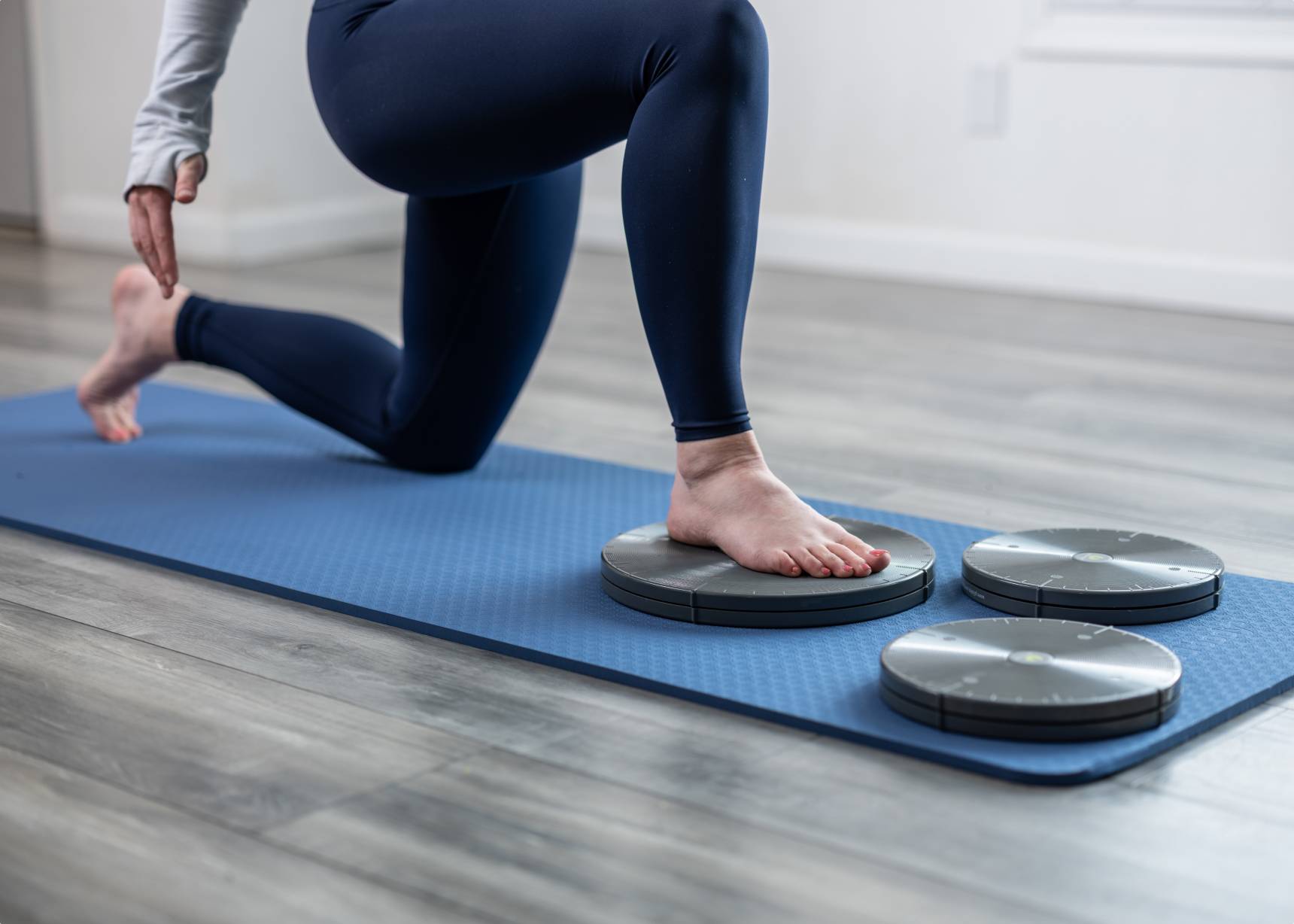Pilates and Triathletes
Pilates and Triathletes
By Robert Kopitzke, PT, USACC
Triathletes must achieve optimal biomechanics to perform well in their varying activities and prevent overuse injuries. Imbalances in flexibility, strength, and agility can lead to poor movement patterns, causing loss of efficiency and injury.
Pilates is an excellent method for triathletes to improve balance by optimizing
- postural positioning
- core strength
- flexibility
- and stabilization in a low impact environment.
When the core is strong and in a good position, the extremities can function at their optimum. The essence of Pilates is control of position and precision of movement.
Impact on the Body
The triathlete places a wide range of stresses on his or her body, demanding the utmost efficiency in motion. Pilates provides an opportunity to develop improved body awareness, functional strength and flexibility by focusing on the stabilizers in the torso, shoulders and hips. This ability to differentiate movement can make a significant impact on energy conservation for any athlete. The more efficiently one moves, the more energy one has to achieve a personal “best time” or to outperform the competition.
One of the most important areas for any triathlete to focus on is the hip joint, which is used in all three disciplines, most notably the bike and run. Triathletes generally train the primary muscles (flexors/extensors) of the hip. Often overlooked is the supporting hip musculature (abductors, adductors and rotators) that assists the larger primary movers. Imbalances in these supporting muscles, e.g., tightness, weakness, and poor coordination, limit the effectiveness of the larger muscle groups.
The External Rotator: Piriformis
Good flexibility of the hip musculature can take minutes off the bike leg for a triathlete and assist in avoiding injury, but poor flexibility can cause minor to serious issues. Below are just a few examples of how an inflexible Piriformis can adversely affect cycling position:
- Lateral tracking of the knee can cause patellar femoral pain
- Poor saddle position due to tight Piriformis decreases power and causes a higher aero-bar position, creating greater aerodynamic drag
- Lateral or rotational rocking of the pelvis can cause lumbar fatigue and spasm
- Excessive loading of the bursae and muscle-tendon junction at the hip can cause bursitis and tendonitis of the Piriformis
- Piriformis compression over the Sciatic nerve track can cause Sciatica.
One of the amazing aspects of Pilates is the variety and variations available to address imbalances in flexibility and control.

Pilates Exercise for the Piriformis
1. Peter Pan
As with all Pilates exercises, begin with core engagement, stabilizing the Lumbar-Pelvic region in neutral.
Focus on lateral rotation of the right femur and elevation of the right foot toward the umbilicus with enough spring to create a stretch in the Piriformis. You can work on a rhythmic alternating movement, sustain the position, or do a Proprioceptive Neuromuscular Facilitation (PNF) contract-relax technique in this position, to encourage deeper lengthening of the Piriformis and deep external rotators of the hip.
An added benefit from this exercise is the lengthening in the hamstrings and adductors of the left leg.
Good strength and coordination in the hip musculature can take minutes off a run and help prevent injury as well. Lack of strength and/or coordination in the Piriformis muscle can produce:
- Poor stabilization of the sacro-iliac joint, creating hypermobility and pain
- Excessive internal rotation of the femur during stance phases of gait contributing to instability of the knee, which can cause rotational injuries of the knee
- Abnormal loading of the posterior Gluteus Medius and secondary hip rotators, causing bursa and tendon inflammation
- Weak Piriformis, which contributes to decreased power of hip extension and reduces running speed and endurance
2. Single leg standing variations such as the Lunge Press
One Pilates exercise specific to strengthening and coordination of the Piriformis is single leg standing variations such as the Lunge Press.
The Piriformis is a primary stabilizer of the hip and should be trained to maintain hip and pelvic position while in a dynamic setting. The emphasis here is on maintaining neutral pelvis alignment, and centered knee under the Anterior Superior Iliac Spine (ASIS) and over the second toe on both legs.
Tip: Try pressing out with left and right leg at the same time, a single leg at a time, or press up/down in a static lunge position. Add a rotating disk to the forward leg for more fun.

Working on Piriformis mobility, strength, and coordination will dramatically improve hip stability and tracking of the femur. This increases the ability to transfer power and improve aerodynamics on the bike and enhance the effectiveness of the stride on the run. Remember that the core holds the pelvis, allowing everything else to function.
An accurate assessment of client limitations is the key to great results. Pilates is an excellent exercise method, but it is an instructor’s skill, knowledge and ability to adapt to the needs of each client that provides the greatest results. Be creative and innovative with Pilates work and both client and instructor will reap the rewards.
About the Author
Since 1987, Rob Kopitzke has been a Physical Therapist specializing in Orthopedic Sports Medicine. He received his Elite level USA Cycling Coach License in 1997, and has worked extensively with multi-sport athletes including nationally ranked Triathletes. Rob co-owns Body Concepts with Linda Bailey.
As seen in the Spring 2006 Balanced Body Pilates COREterly